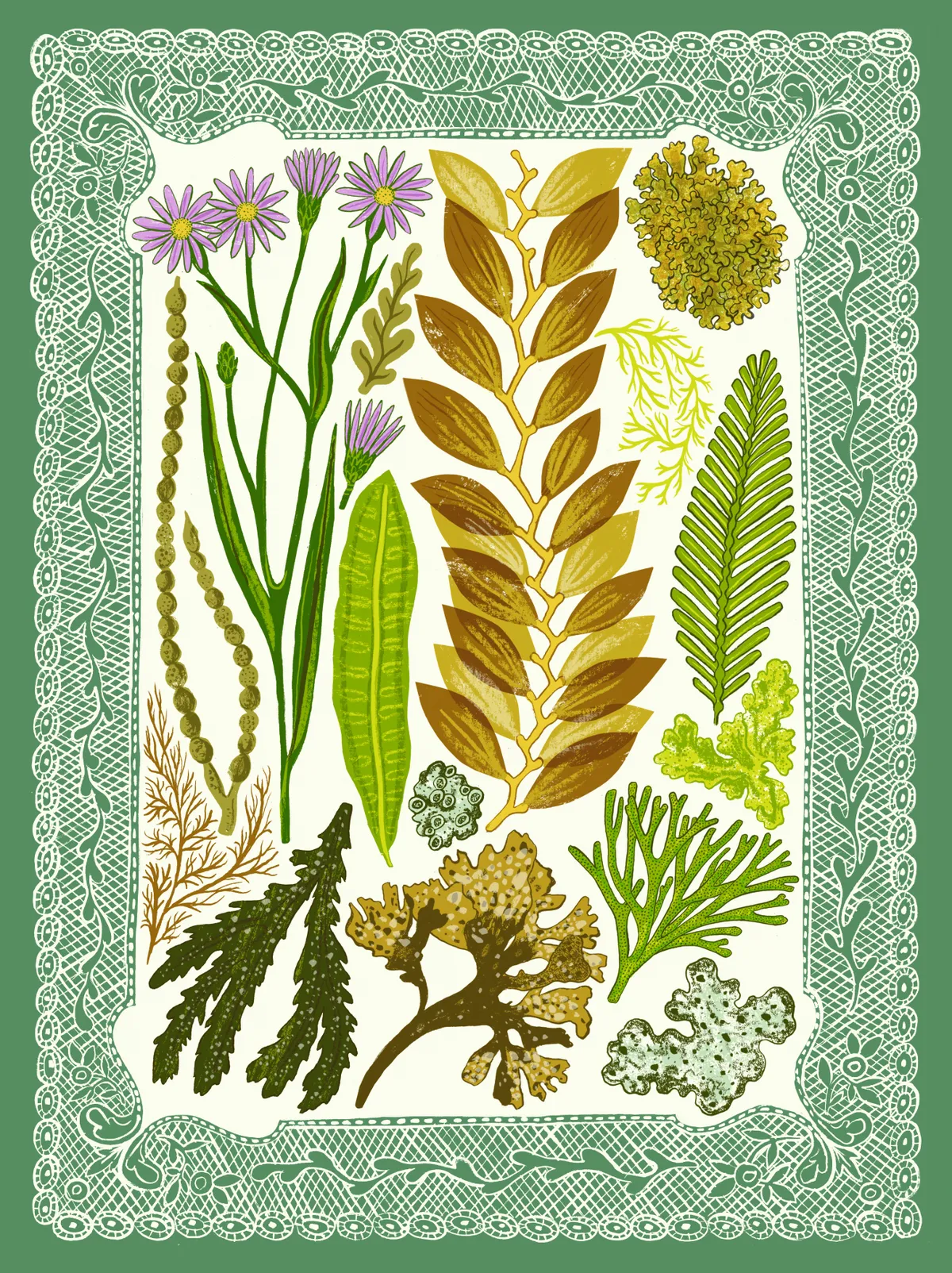The rugged, unspoilt Beara Peninsula is the wildest of the peninsulas in southwest Ireland. Here mountains meet the sea on the very edge of Europe. Admittedly, most wildflowers seen in Ireland are also to be found in Britain and northern Europe, Ireland’s status as the most geographically isolated part of Europe (it has been an island for longer than Britain), restricted the number of plants that re-established themselves here after the last Ice Age. The floral range may be more limited than that of mainland Britain, but the mild maritime climate is forgiving, and there is a group of plants (collectively known as Lusitanian flora) that is native to Ireland and the Iberian Peninsula, but absent from much of the rest of Europe. These present an unresolved biogeographical puzzle.
Examples are the rare but include the handsome and fleshy St Patrick’s cabbage (Saxifraga spathularis) and Irish spurge (Euphorbia hyberna). Colonising the roadsides alongside Crocosmia x crocosmiiflora and Fuchsia, the spurge foliage takes on a rich crimson hue as summer stretches into autumn.
The region around Bantry Bay is also home to some interesting horticulture. Notably the Harold Peto-designed Italian garden at the heart of Ilnacullin on Garnish Island, and the mature arboretum developed by the naturalist Ellen Hutchins at her coastal home Ardnagashel House.
Inspiration for the trip
I was keen to spend some time botanising in the homeland of William Robinson (1838-1935). Having read his books as a student, I recall him using wild Irish plants at his Sussex home, Gravetye Manor. Less well known, outside of Ireland, is the pioneering work of Ireland’s first female botanist Ellen Hutchins (1785-1815) into seaweeds, lichens, mosses and liverworts. She is honoured each August with a week-long festival (ellenhutchins.com) that includes talks and workshops. I liked the idea of studying and preserving seaweeds 1800s style so I signed up for a few of the botanical workshops, and a seaweed and lichen study session with two charming and entertaining botanists from the National Botanic Gardens of Ireland.

When to go
August and September are wonderful times to visit County Cork. The narrow lanes and wide hedgerows are a riot of colour, the sea is warm, and whale watching boats leave from the quiet harbours.
Where to go
The Beara Peninsula is deceptively large with slow, winding lanes and steep remote hills so I combined hiking with driving. Hikes from Glengarriff take you through sessile oak woodland, heavy with moss, and up into the rugged Caha Mountains. Venture even further west and low, sandstone mountains (the Slieve Miskish) drop down to the boxy and charismatic 1960s Dursey Island cable car at the very tip of the peninsula.
The flora is varied and colourful. A gold and purple summer haze of moorland forms a mosaic with bright spongy sphagnum bogs that fill the wet hollows between the mountains. Along the coast a patchwork of small fields, the damp ones a mass of purple loosestrife (Lythrum salicaria) and creamy meadowsweet (Filipendula ulmaria), lead to deserted bays and hidden estuaries where glossy seaweeds float and the lilac flowers of sea aster (Tripolium pannonicum) pepper salty banks.
Join the Wild Atlantic Way between Allihies and Eyeries to cut across dramatic wild stretches of ancient red sandstone. The naturalised Chilean fuchsia (Fuchsia magellanica) roams freely here, romping across the exposed hills, reminding me that this now unfashionable shrub can be a beautiful billowing crimson and purple mass that jostles alongside gorse (Ulex gallii) and heather (Calluna vulgaris and Erica cinerea) quite happily given a wide expanse to dilute the effect.
Exploring Sheep’s Head Peninsula, on the southerly side of Bantry Bay I met smooth-skinned horses as I strode across wide expanses of shimmering grassland, and then carefully navigated the mysterious blanket bogs. Here I found drifts of white tufty bog cotton (Eriophorum angustifolium) sticky sundews (Drosera), sedges, and the statuesque Royal fern (Osmunda regalis), a native of Ireland. Dried by the wind and standing sentinel straight, the yellow star flowers of bog asphodel (Narthecium ossifragum) had dried to burnt ochre.
Plant to grow at home
The native flora of Ireland is punchy and vibrant in late summer. Especially eye- catching is the strawberry tree Arbutus unedo, a decorative evergreen shrub or small tree beloved by birds and bees. Normally associated with the Mediterranean it is also native to Ireland, an example of disjunct distribution. The first Irish specimen growing in the wild was recorded in 1835. Harvesting for charcoal has reduced the wild population, but you can find lovely mature specimens around Glengarriff. A pioneer plant, it is easy in cultivation being tolerant of frost, drought and salt.
Despite being a member of the Ericaceae family it is also relatively unfussy about soil pH. Its evergreen habit can be useful for wildlife-friendly privacy screening and as a wind barrier. The combination of glossy serrated dark leaves, the appearance of pale, sweetly scented flowers in autumn and bright-scarlet fruits make it a valuable addition to any garden. The antioxidant-rich fruits are also delicious in cakes and for jam.
Guides and maps
Wildflowers of Cork City & County by Tony O’Mahony (Collins, 2009).
You can download maps at irishtrails.ie
Where to stay
Blairscove House & Restaurant offers stylish apartments in a coastal location. It also has an outstanding restaurant using locally sourced produce.
Address
Blairscove,
Murreagh,
Durrus,
Co Cork,
P75FE44, Ireland.
Tel +353 (0)27 61127, blairscove.ie
Words Hannah Gardner
Illustration Alice Pattullo